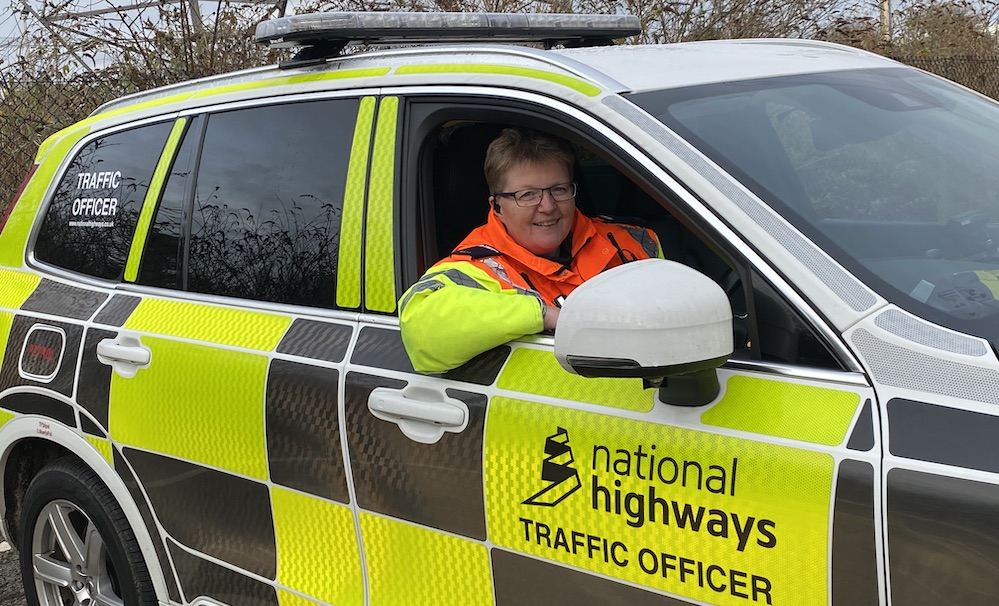Motorway set for renovation in 2013 as M1 system goes live and CLEAR traffic project gets under way.
Managed motorways use a range of innovative technologies to control traffic with features that include variable mandatory speed limits and opening the hard shoulder to traffic at busy periods. The plans follow a successful pilot on the M42 in 2006, which saw accidents reduce by more than fifty per cent over a three-year period.
This announcement comes as a section of the M1 has recently been converted into a managed motorway system which came into effect ahead of the 2012 Olympics. Roads Minister Mike Penning said:
“We expect parts of London and other areas of the UK to be much busier than usual during the London 2012 Games, which is why I am very pleased this section of managed motorway has gone live now – some eight months earlier than planned. It will help to provide additional lane capacity at a time when we expect to see a significant increase in the number of journeys on our roads.”
Project manager for the Highways Agency John Martin further explained:
“We’ve used our successful experience of operating managed motorways in the West Midlands to produce an updated design which would see the hard shoulder permanently converted to a running lane, with fewer overhead structures such as gantries. This evolution in the design of schemes, which start main construction from 2013, will provide the additional capacity required, without compromising overall safety.
“A managed motorway will provide much needed additional capacity on this vital section of the national transport network – easing congestion and making journey times more reliable for the 146,000 road users, including hauliers and commuters, who depend on this section of the M25 each day.”
The updates are due to start in 2013/14, subject to completion of legal processes. It is estimated to cost between £137 million to £247 million. It follows successful completion of the widening of the motorway between junctions 16 and 23 and junctions 27 and 30 in June.
New guidelines were launched recently to improve how the Highways Agency and emergency services work together as part of a Government strategy to reduce the £1 billion cost of motorway incidents. Police, fire and ambulance services and the Agency have signed up to the CLEAR (Collision, Lead, Evaluate, Act, Reopen) booklet – drawn up by Agency to tackle congestion caused by lane closures.
CLEAR aims to improve the way incidents are managed by analysing and reviewing so as to identify the potential for improvements. Since its launch in March 2011, the Department for Transport has already provided £2.7m funding for thirty eight 3D laser scanners to 27 different police forces to aid them in capturing incident details more quickly and to significantly shorten motorway closure times. Trials suggest that the scanners reduce clear up times by 39 minutes on average.
The initiative has also led to research by the Highways Agency into equipment to determine loading weights of broken down vehicles, so that traffic officers can safely remove them when they are blocking carriageways. Mike Penning commented:
“Last year, nearly 90,000 incidents led to lane closures and delays on England’s motorways. There is nothing more frustrating than being stuck in a traffic jam for hours on end. But even worse than that is the shocking £1 billion cost of those lost hours for our economy.
“That is why it’s important that emergency responders are clear about their roles and responsibilities and work smarter together to keep traffic moving in support of economic growth – as well as continuing to ensure the safety and security of all road users, the guidelines help them do just that.”
source, handyshippingguide







Increasing traffic is a growing problem with road getting limited. But when a big event like Olympics is underway the roads will definitely be busier. It is a timely decision taken by authorities who will save people from inconvenience and business from incurring loss.
Alternative routes have to be followed by the logistics companies and other transport companies to avoid any late delivery of goods.
There is actually nothing frustrating than being stuck in traffic jam for hours doing absolutely nothing except contributing to the economic loss due to that one long underproductive hour. A manages motorway is essentially required now days. But the decision taken by authorities is pretty good and will save people from inconvenience.